With their flowing shapes boats have always delighted. A boat is a wellspring of beauty, but if it's hand-built and especially if it's made of wood, things could get out of hand and enter the realm of addiction and ecstasy. For those who are willing to take the risk I will present below the construction of a boat, from A to Z. Since for most Romanians the waters are far away, I have chosen a lightweight construction, under 20 kilos, a canoe that can be easily transported on the car's bars to the nearest river or lake. A boat is a demanding and special thing, so don't be surprised if the cost of materials comes to around 1,000 lei.
There are several methods of building lightweight boats but because of the simplicity I have settled on the one known as "stitch&glue". This method can be tackled even by a first time builder and is basically similar to tailoring. The material required is plywood, from which the component parts are cut out and sewn together with salt, glued along the seams and stiffened with fibreglass.
The first step is to find a project. There are sites offering various plans at affordable prices or even for free, but for beginners I recommend Michael Storer's simple designs (https://www.storerboatplans.com/design/boatplans/). The canoe I present below is the Kymi River 16 (https://www.woodenboat.com/boat-plans-kits/kymi-river-16), a more elaborate construction that I chose for its beautiful shape.
Once we have the project we will have to get the materials. For the Kymi River we need two sheets of 4mm thick plywood with a surface of 1220/2500cm and if we talk about boats we automatically talk about nautical plywood. Nautical plywood has the quality of not peeling under the action of water or moisture, both because of the wood essence (okoume) and because of the adhesive with which the veneer sheets have been glued together. In Romania, okoume plywood can be purchased from Holver at a price of around 120lei/board. We also need fibreglass and epoxy resins (epoxy, not polyester!) to impregnate the fibreglass fabric. Glass fibre is sold as cloth, in one metre widths. The webs from which it is woven have different thicknesses, and its specific weight is used to differentiate it. For canoes we need glass fibre of 160 grams/square metre, or if we can't find it, a maximum of 200, 15 linear metres.
Epoxy resin is a two-component chemical compound (the resin itself and the "hardener"). The resin is prepared for impregnation shortly before use by mixing the two components in the proportion specified in the product data sheet (EPIPHEN RE 4020 + CATALYST 4020), which takes about 5 litres for a light boat. Both the fibreglass fabric and the epoxy resin can be purchased from Polydis. A linear metre of fibreglass costs about 10 lei and a 5 litre kit of resin + the corresponding hardener costs about 600 lei. We also need 15 metres of copper wire with a cross-section of 1.5 square millimetres (available from the electrical supply as Fy 1.5 insulated conductor, which can be stripped at home with a cutter), sandpaper of various grain sizes and a few strips of wood, which can be bought on the spot.
With these materials we can take care of the tools. For cutting plywood we need a pendulum electric saw, and for the rest of the operations we need the usual tools: a router, a handsaw, a patent, a drill, etc. We also need a covered area of 6x3m, protected from the weather. As epoxy resin only cures at temperatures above 20C, if we want to build in the cold season we need access to a heated workshop (garage), whereas if we are building in the summer months a shed will suffice.
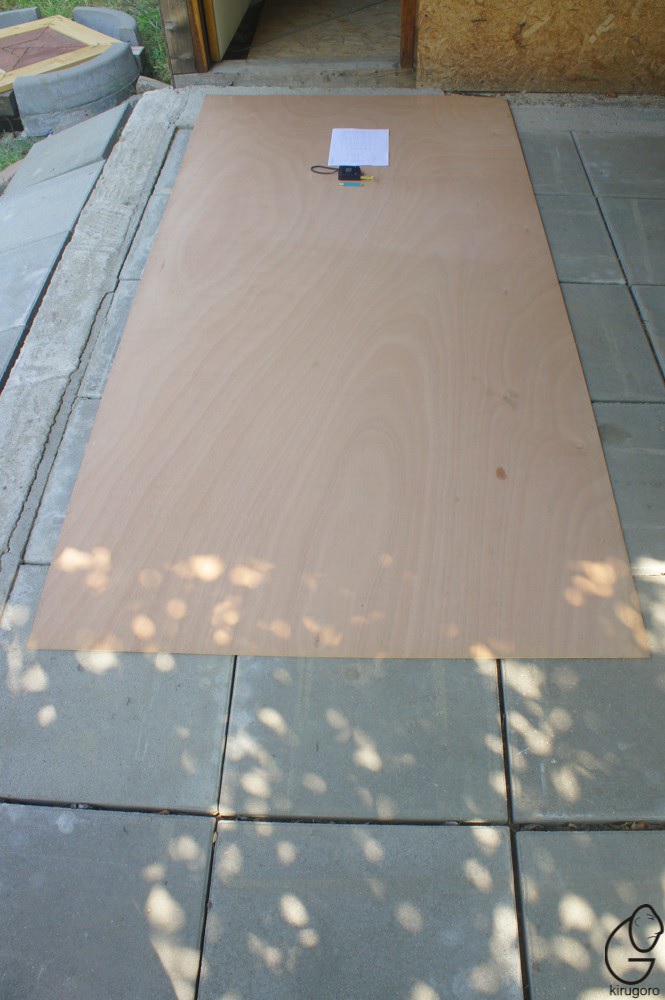
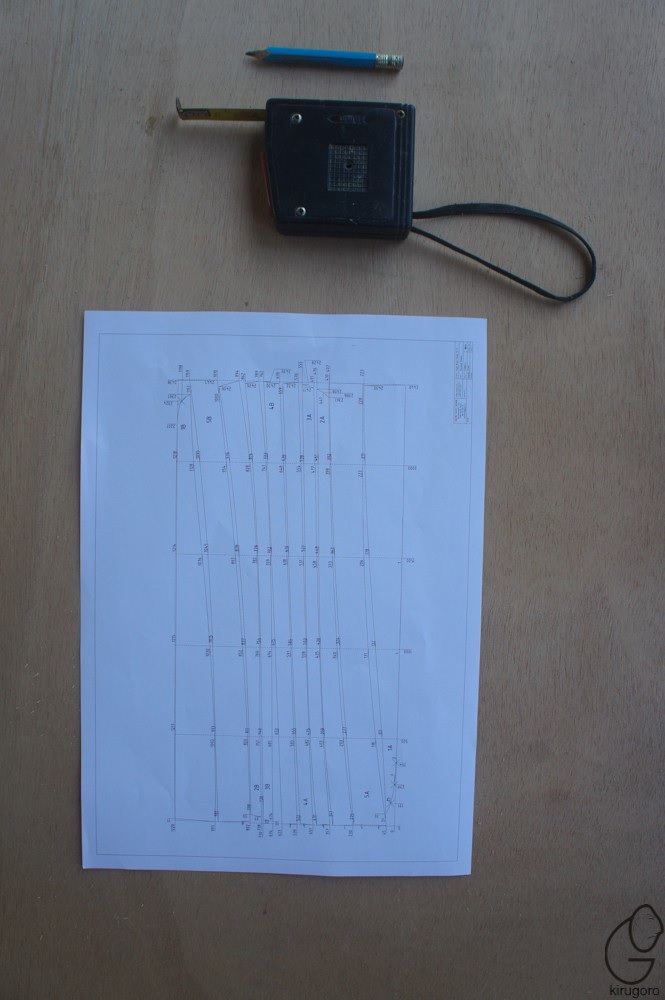
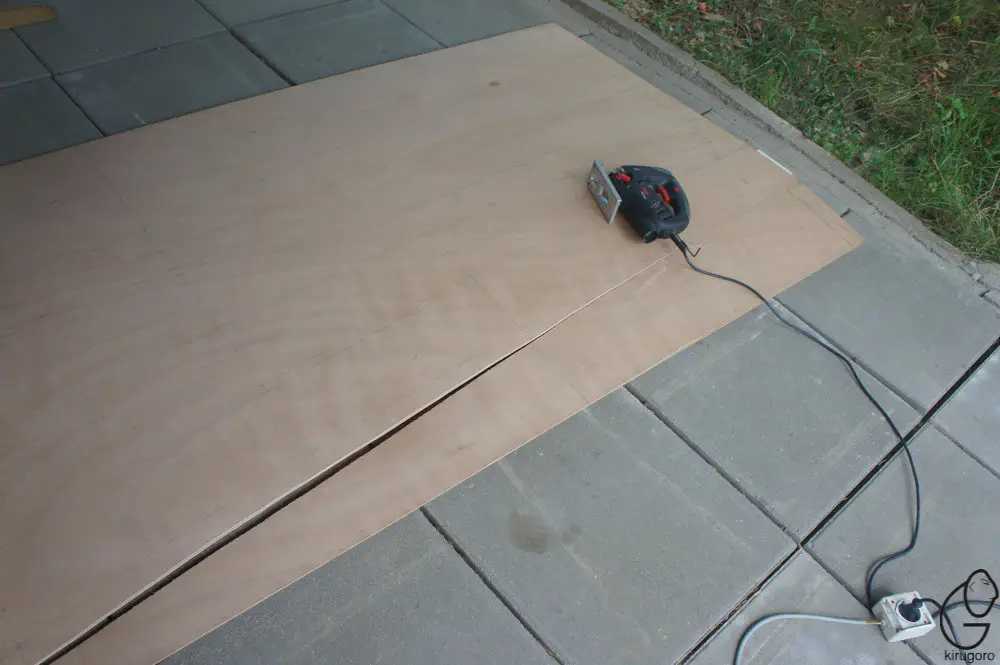
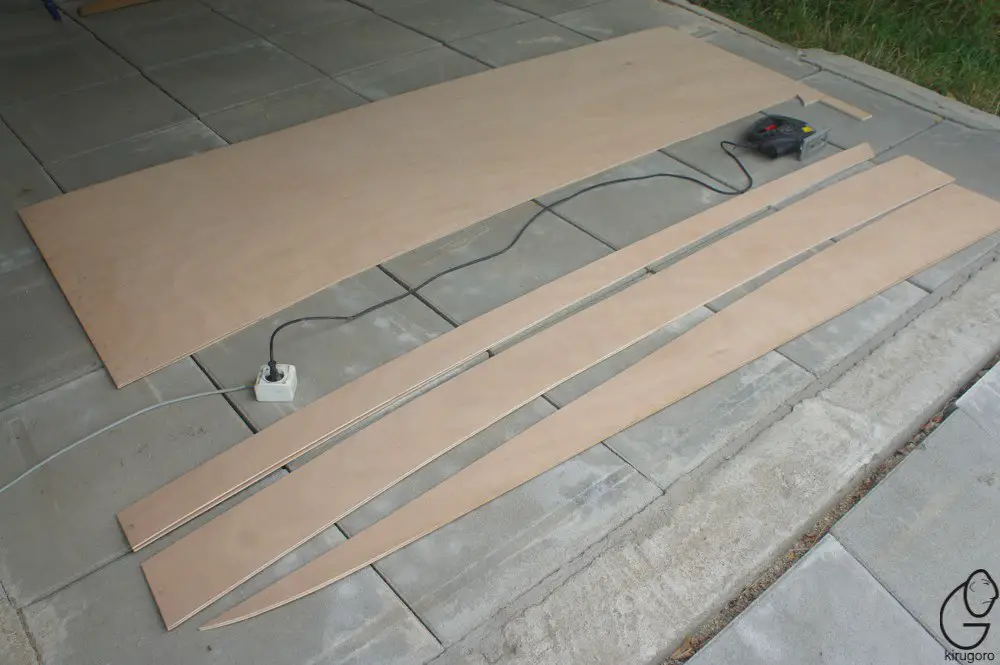
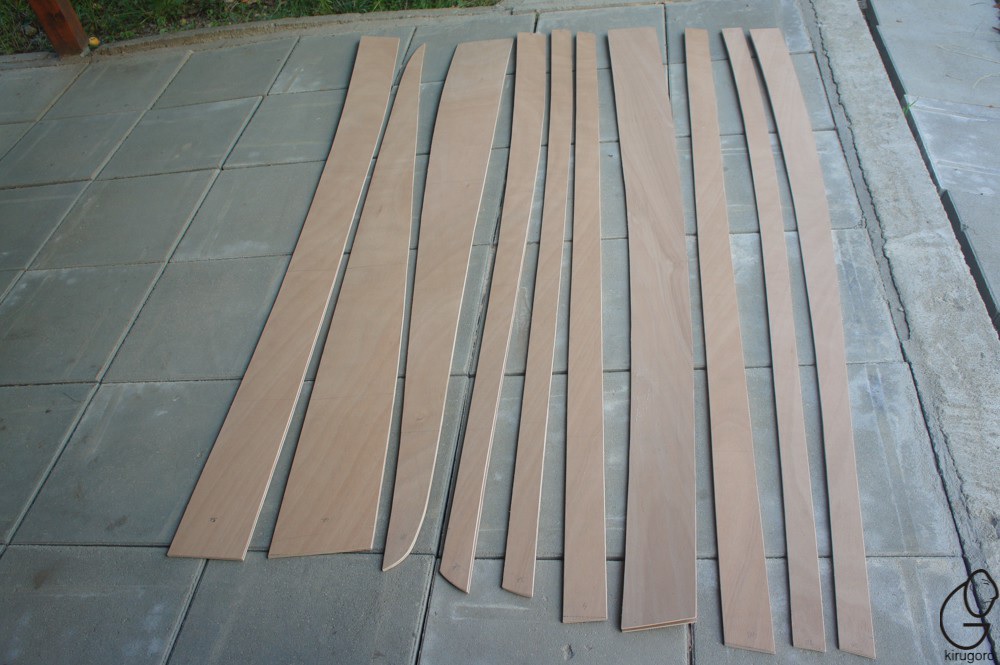
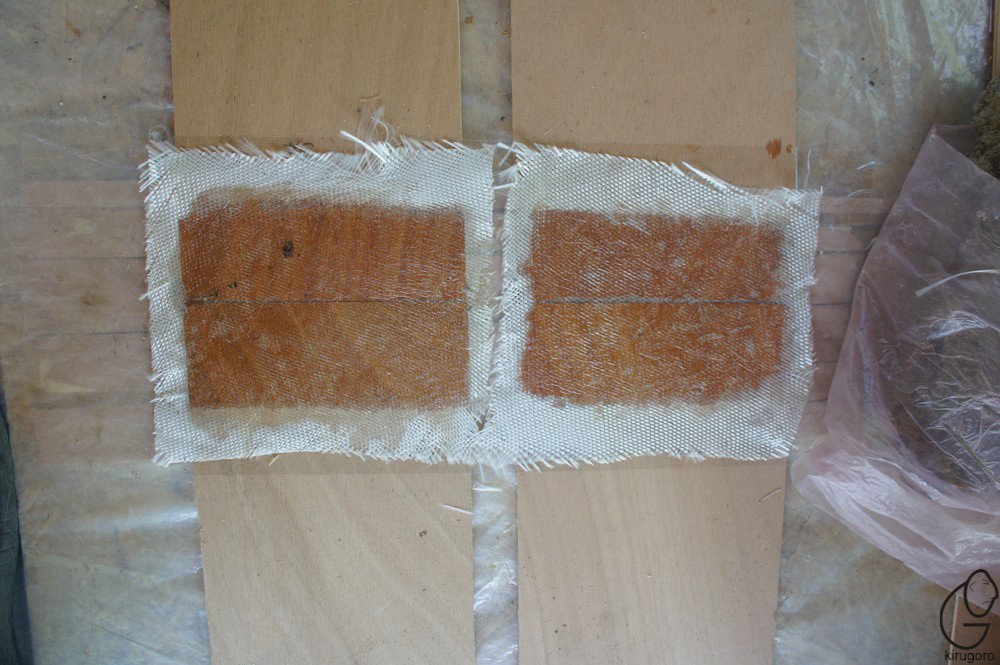
The first operation consists of tracing the elements of the boat on the plywood. There are several methods to do this, but the Kymi River 16 plans are described by a set of X-Y coordinates explained in a plan. Transposing these points onto the plywood by measuring them with a tape measure, we obtain a set of points which we then join with straight lines. Since the boat is symmetrical, it is not necessary to draw the left and right side marks, but we will draw a secure sheet of plywood which we will overlap and glue to the second one with double adhesive tape and cut the sheets at once.
At the end of the cutting operation we get curved strips called fillets. Since the canoe is 5m long and the plywood is only 2.5m long, two fillets will have to be glued end to end, one in extension of the other. The operation is done with epoxy resin and for strength the solder is "reinforced" with fibreglass strips, front and back.
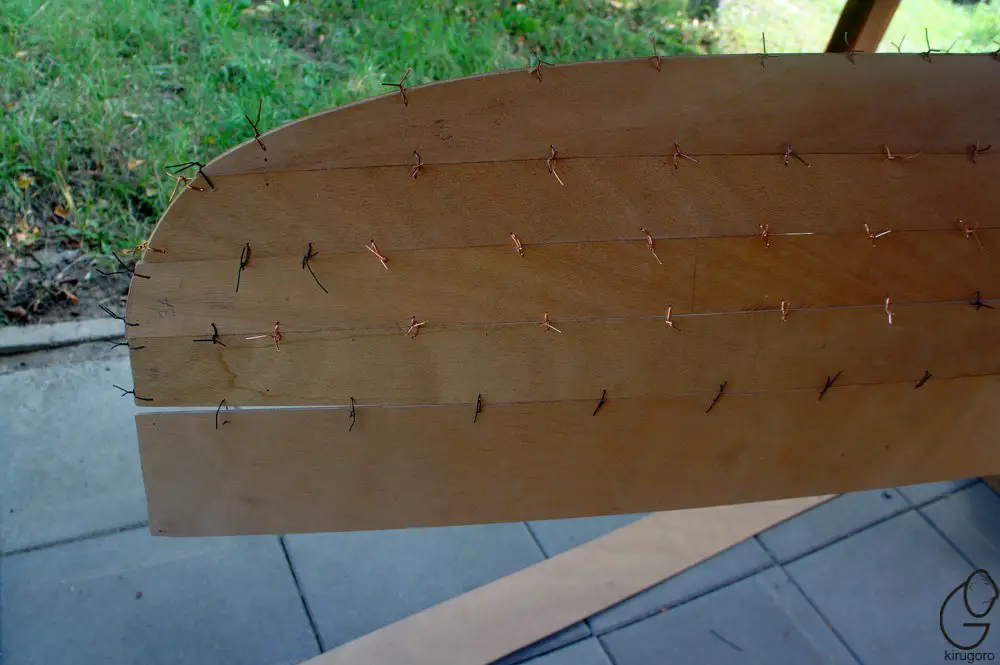
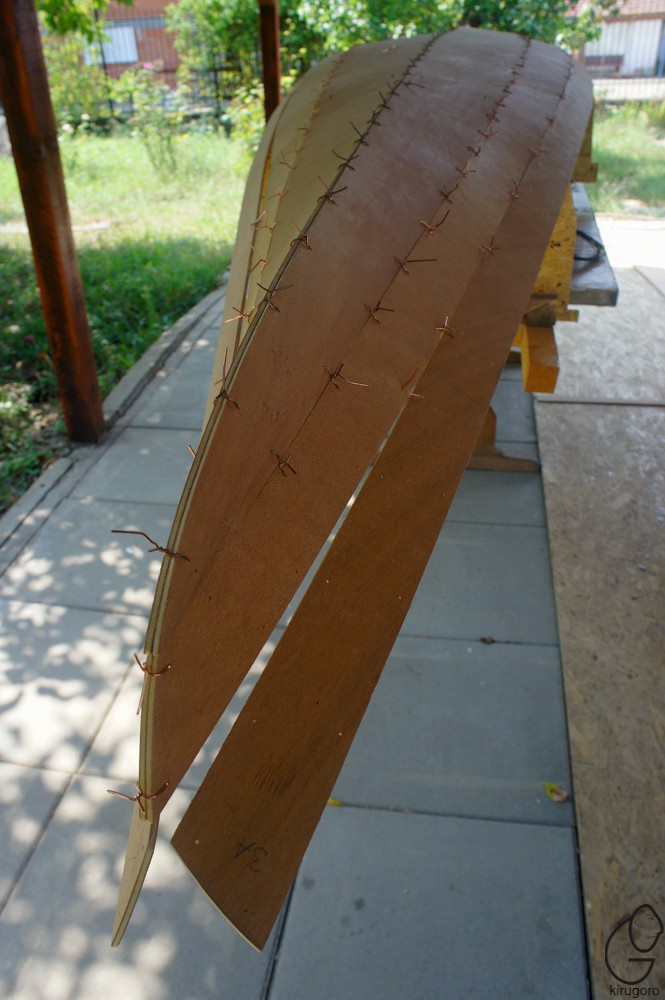
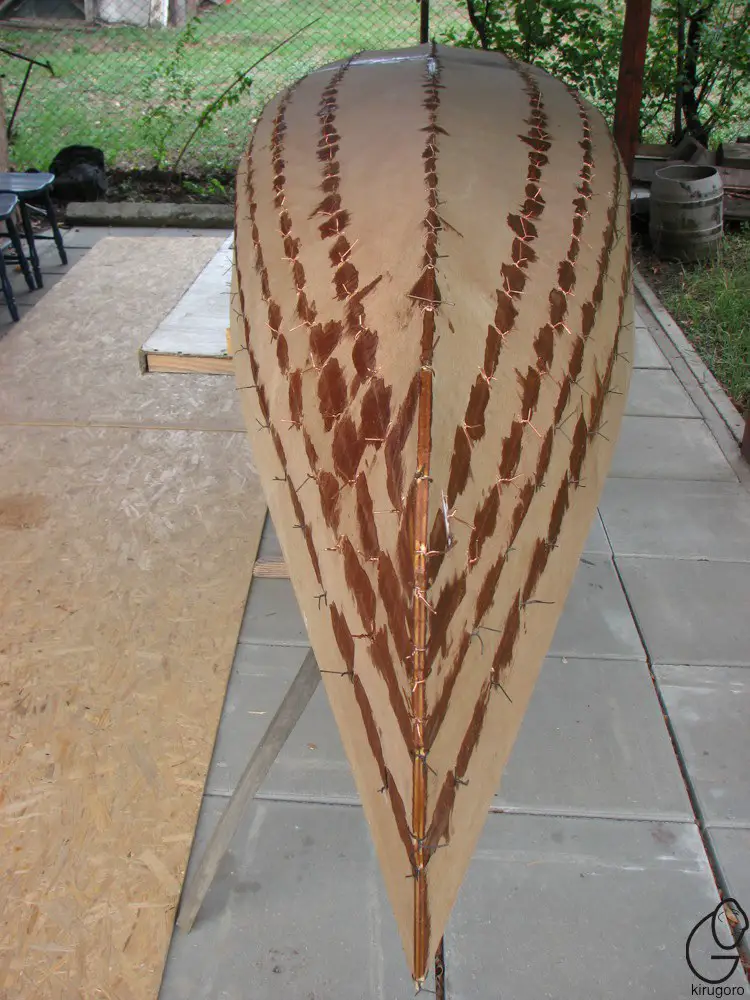
To move to the 3D shape of the boat we need to sew the plywood tabs with copper wire around the perimeter. This is prepared by drilling holes (every 15 cm) on the outline of the fillets, which are sewn in pairs, two by two, with twisted copper wire loops. At the end of this work we will be able to see the boat for the first time in its full size and imagine ourselves riding it, which will sustain our enthusiasm and encourage us to continue. The wires are a temporary fixture that we will discard once we have glued all the tabs to the outline with epoxy resin ropes thickened with wood flour (fine sawdust).
Once you get rid of the wires, you can say you already have the boat, only it has to be strengthened by adding a layer of fibreglass, an operation called "lamination".
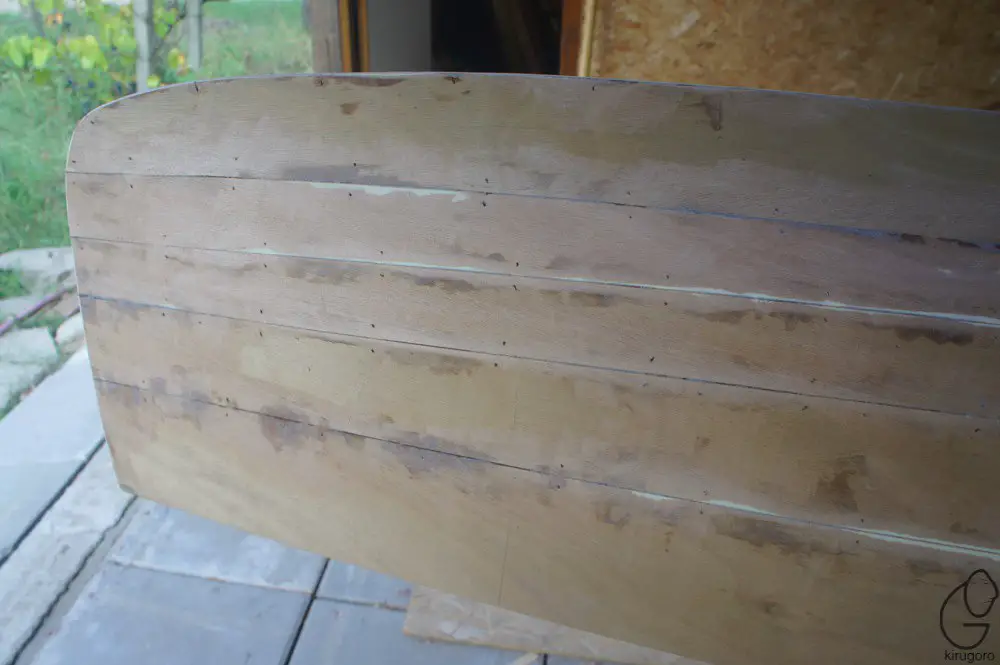
The fibreglass fabric is laid over the plywood body and dry "draped" with a brush until it sits perfectly without wrinkling, then the resin mix with hardener is poured on top and spread evenly over the entire surface with a squeegee, brush or trowel. As the resin becomes viscous within a few minutes of mixing, make successive doses, small enough to allow time to spread them before curing. When the entire surface of the canoe is covered with resin, wait about 10 hours and apply the next coat, repeating
the operation 3-5 times (or as many times as necessary until the fabric is completely covered).
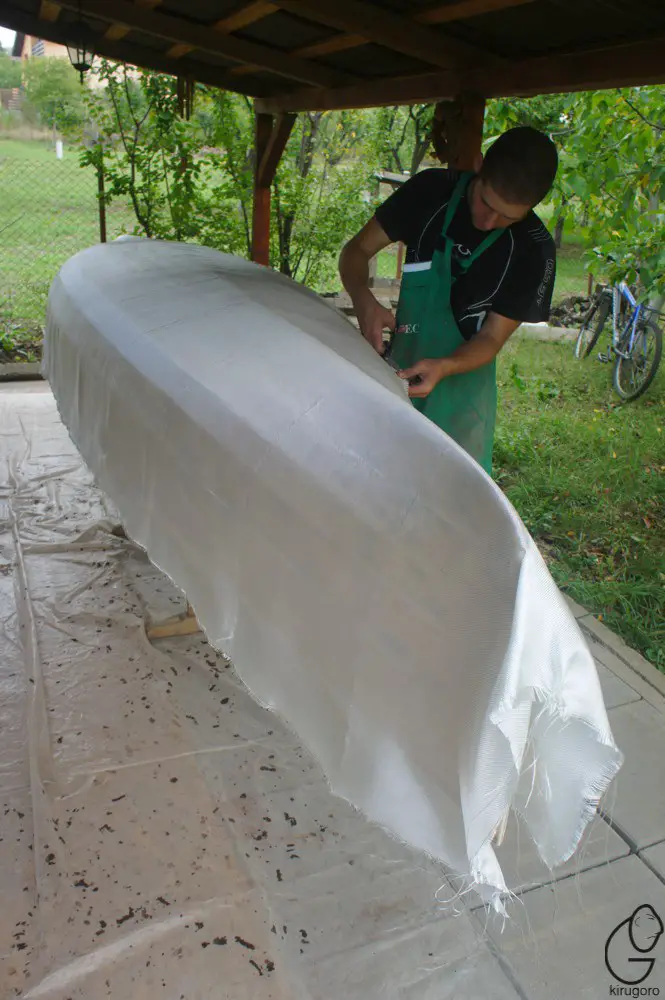
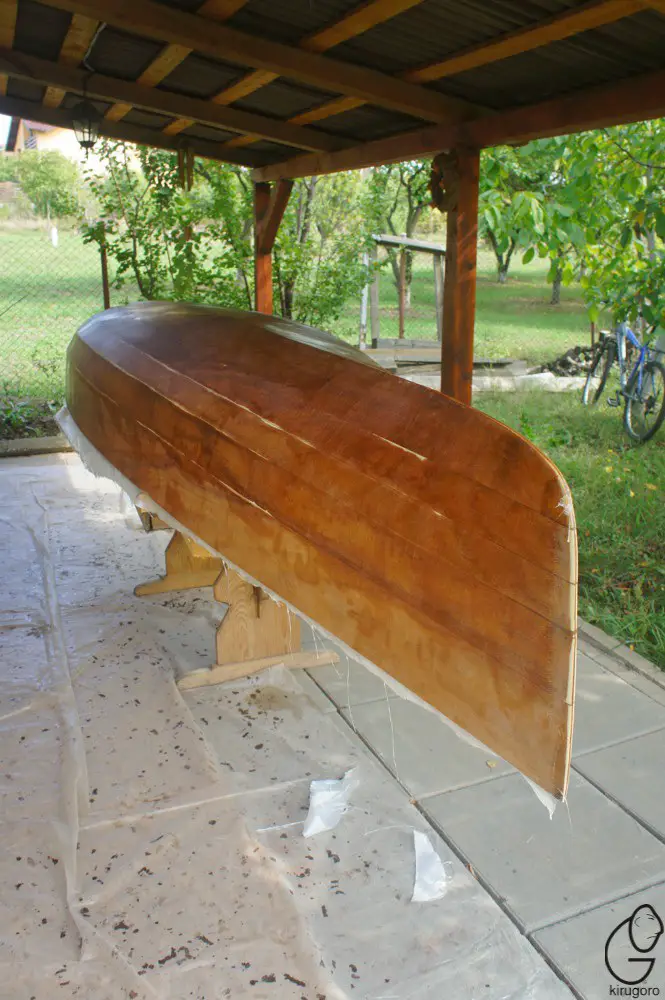
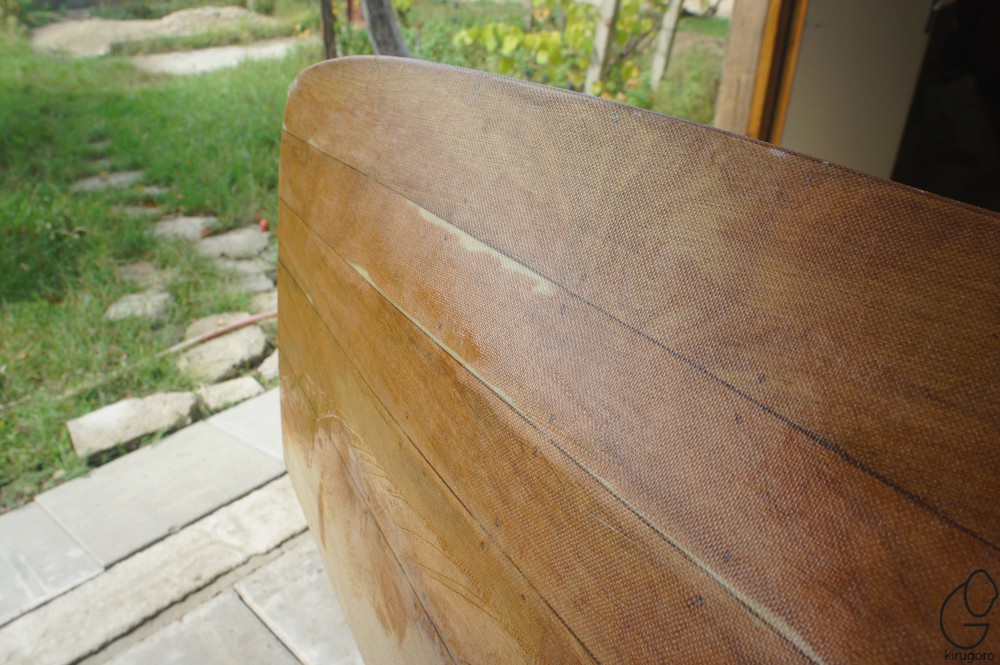
Once impregnated, the fibreglass fabric becomes perfectly transparent, so the boat will look like varnished wood, but if you want to stain it, just mix paint pigment (powder) into the resin mass.
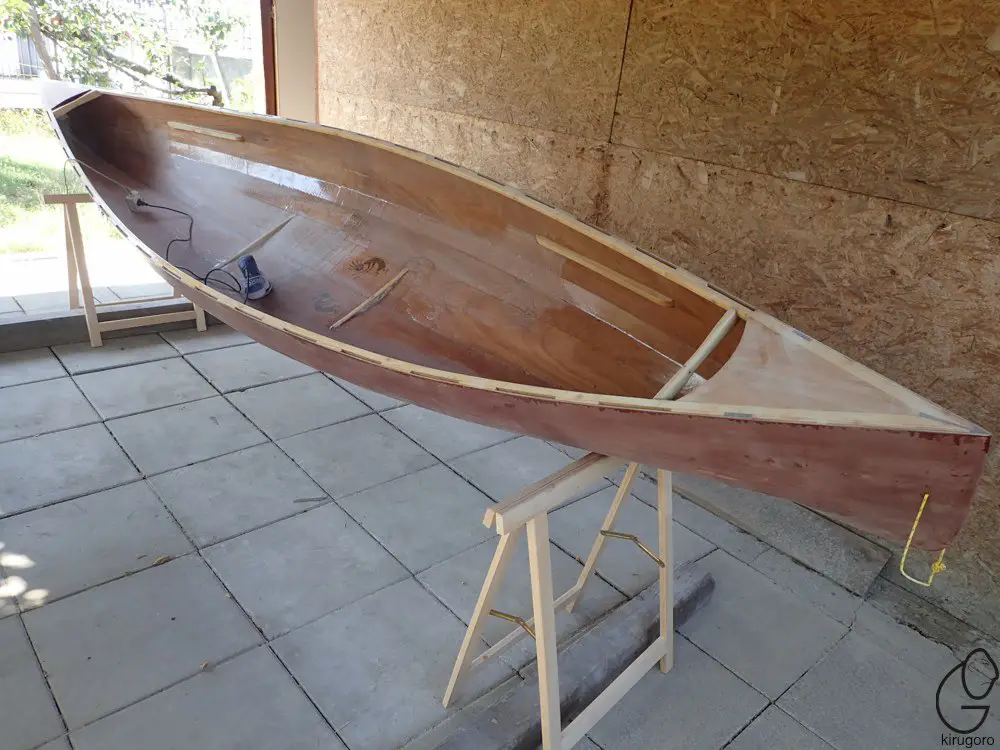
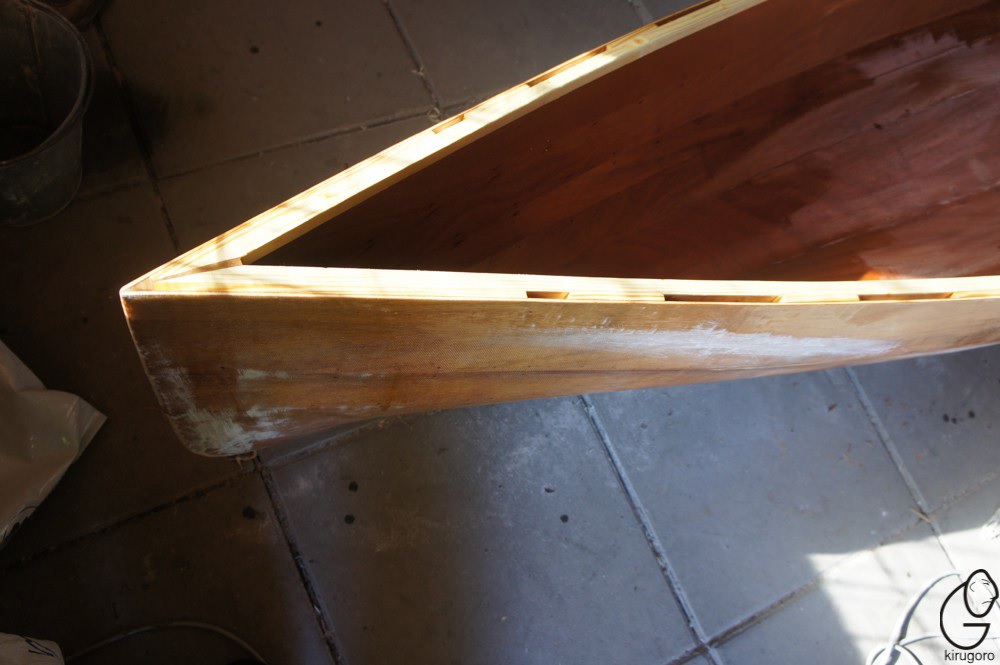
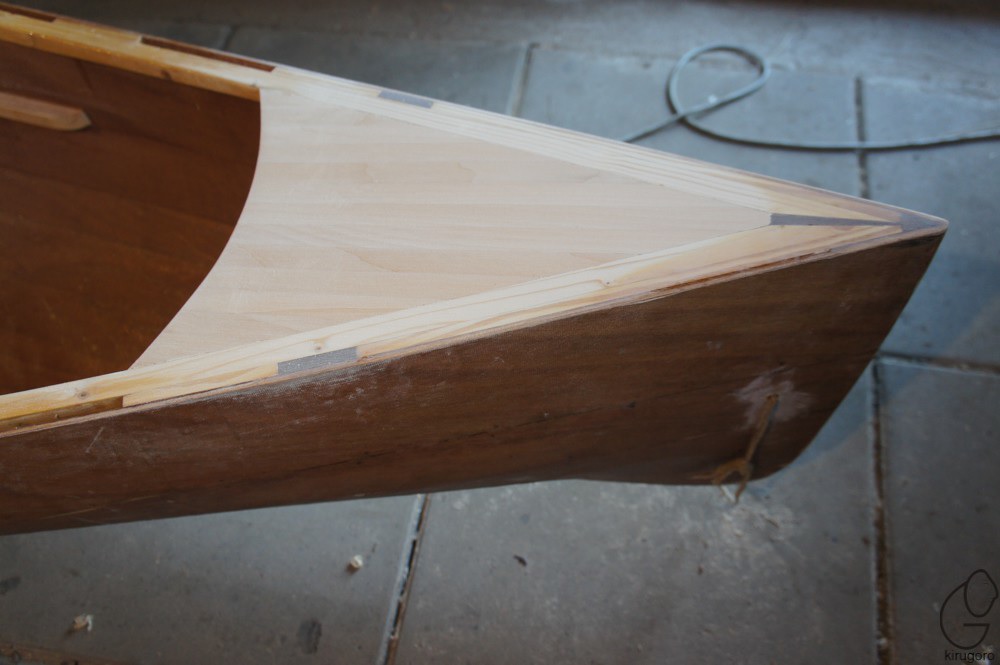
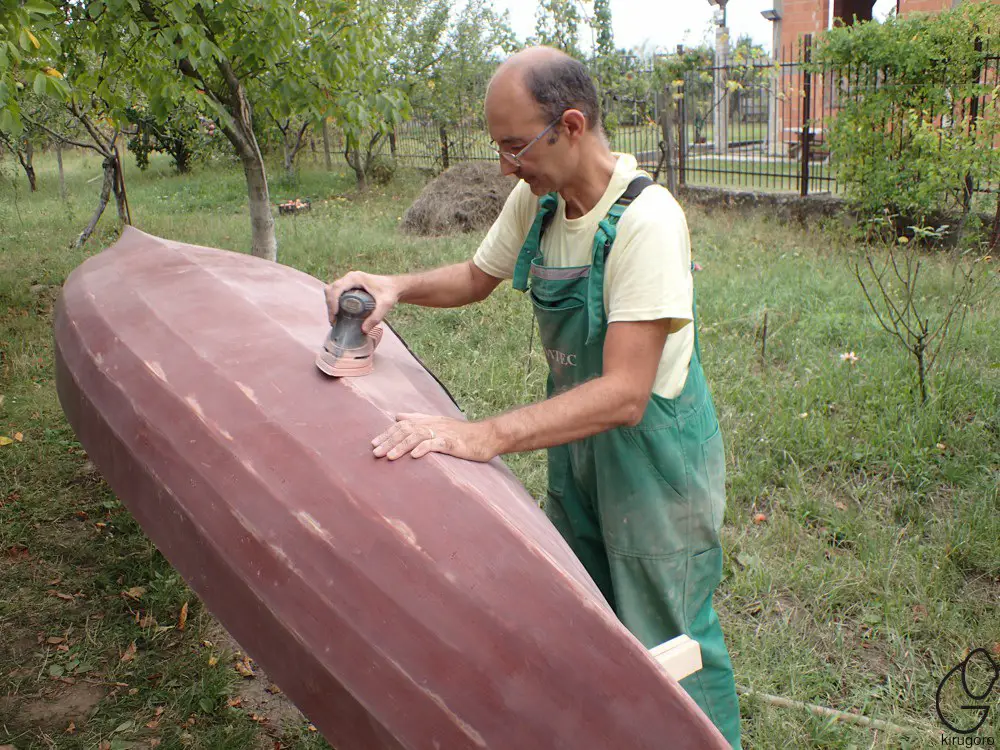
Two days after the last application, the resin is sufficiently cured to continue working and we can proceed to strengthen the edges by gluing 25x25mm wooden battens called copings along them, and in the bow and stern we can make triangular decks of wooden battens or planks. After this operation the hull of the boat only needs finishing operations with increasingly fine-grained sandpaper and the final coating with a layer of yacht varnish with UV protection.
The canoe is finished and can be put on the water, but for a first ride we still need rowing seats and, of course, oars. Traditionally the seats are made as wooden frames inside which the seat is woven with a synthetic thread that does not stretch. As fir or pine does not provide the necessary strength, hard woods are used, preferably ash.
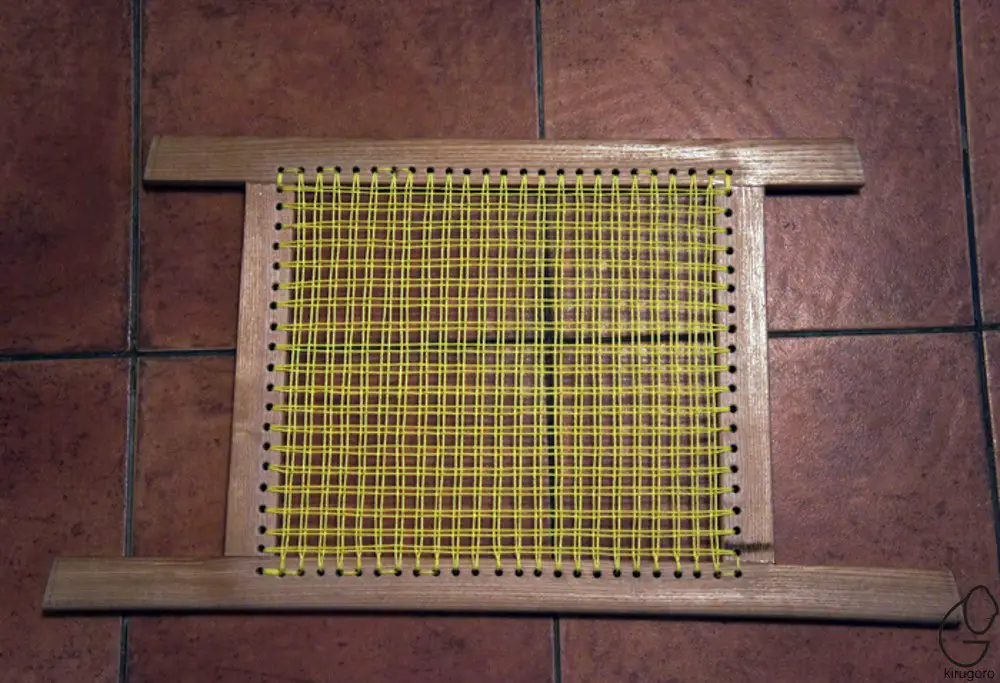
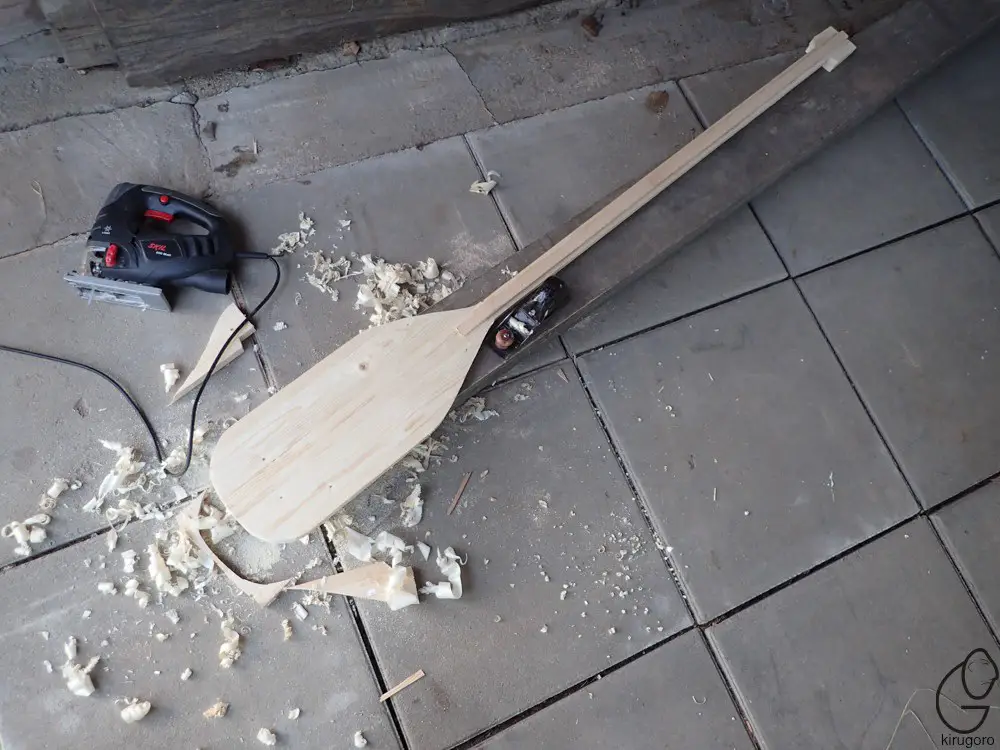
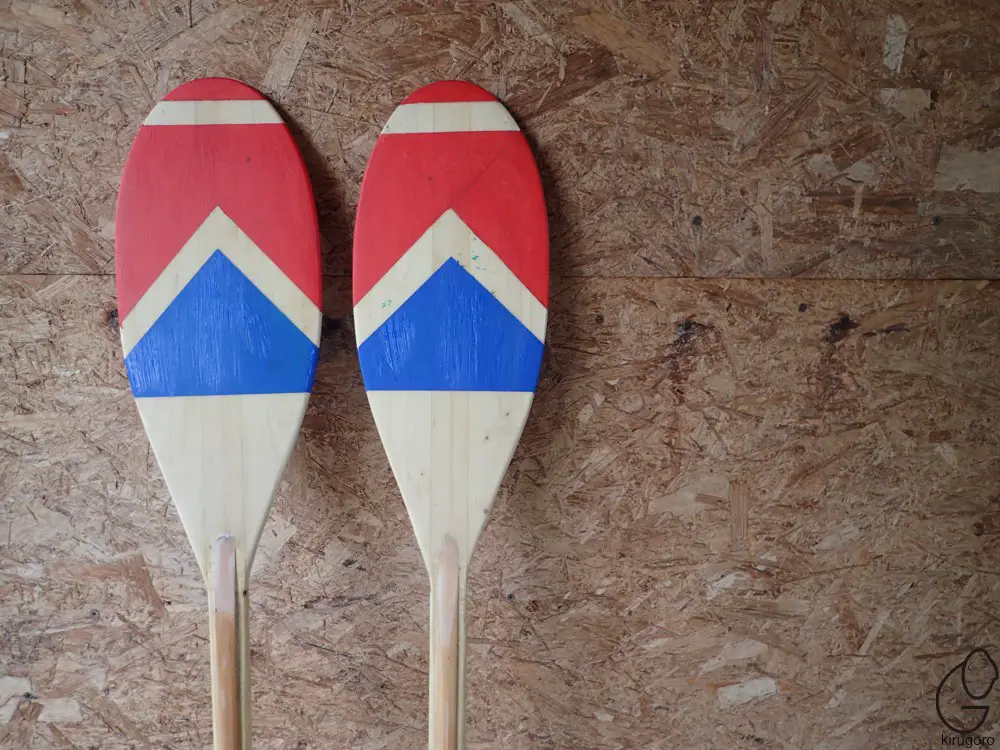
The oars are made from pine slats glued together in the form of a panel and then sanded with a sandpaper and sandpaper. To protect the wood against water, the oars are fully laminated with fibreglass and covered with epoxy resin, just like the body of the canoe. If we are not in a hurry to get on the water, before applying the fibreglass to the oar's feathers, drawings can be made to show the builder.
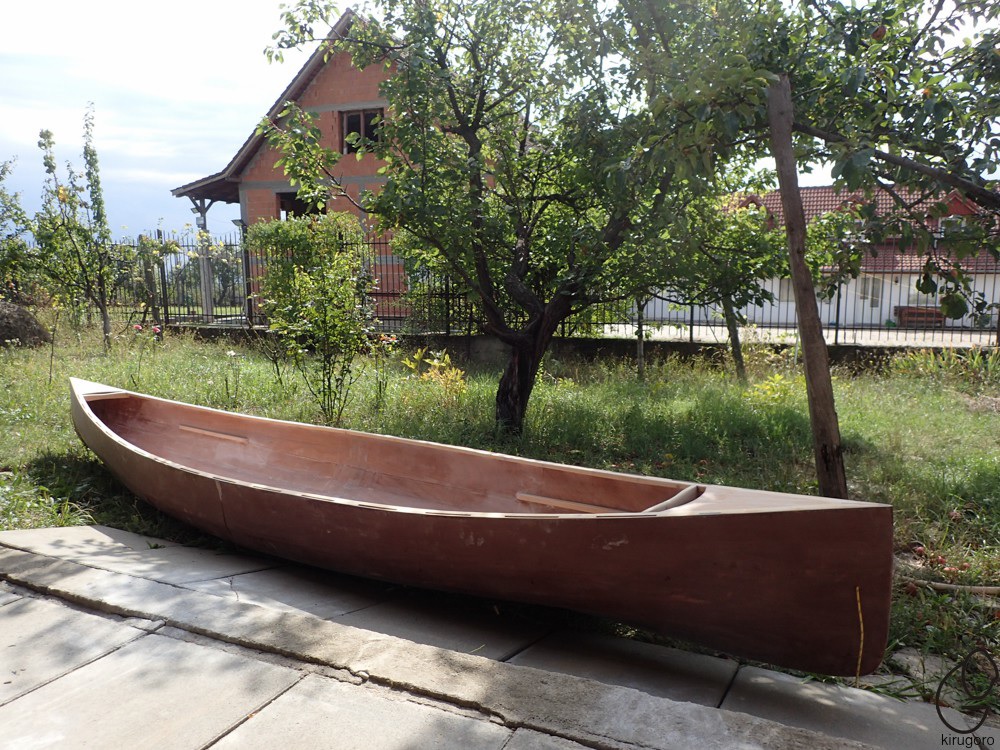
Ready. With that we are proud owners of a pleasure boat that has given us satisfaction and the opportunity to increase our self-esteem. I said at the beginning of the article that a handmade wooden boat is addictive: in most cases the first boat built is not the last. Most boaters only stop when they have nowhere else to store their boats, but there have been many cases where superb boats have been sold for nothing just to free up space.





















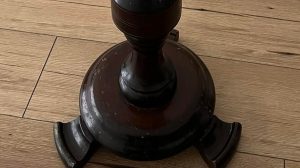
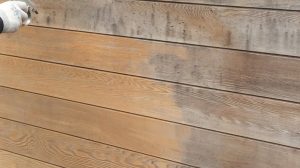
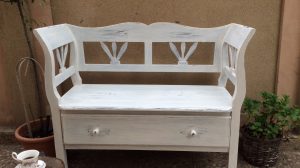
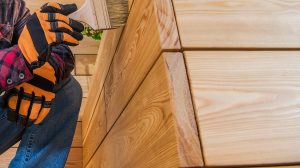
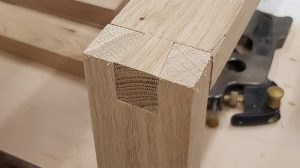
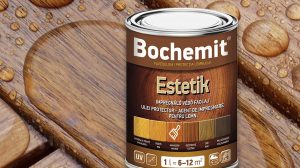
Add comment